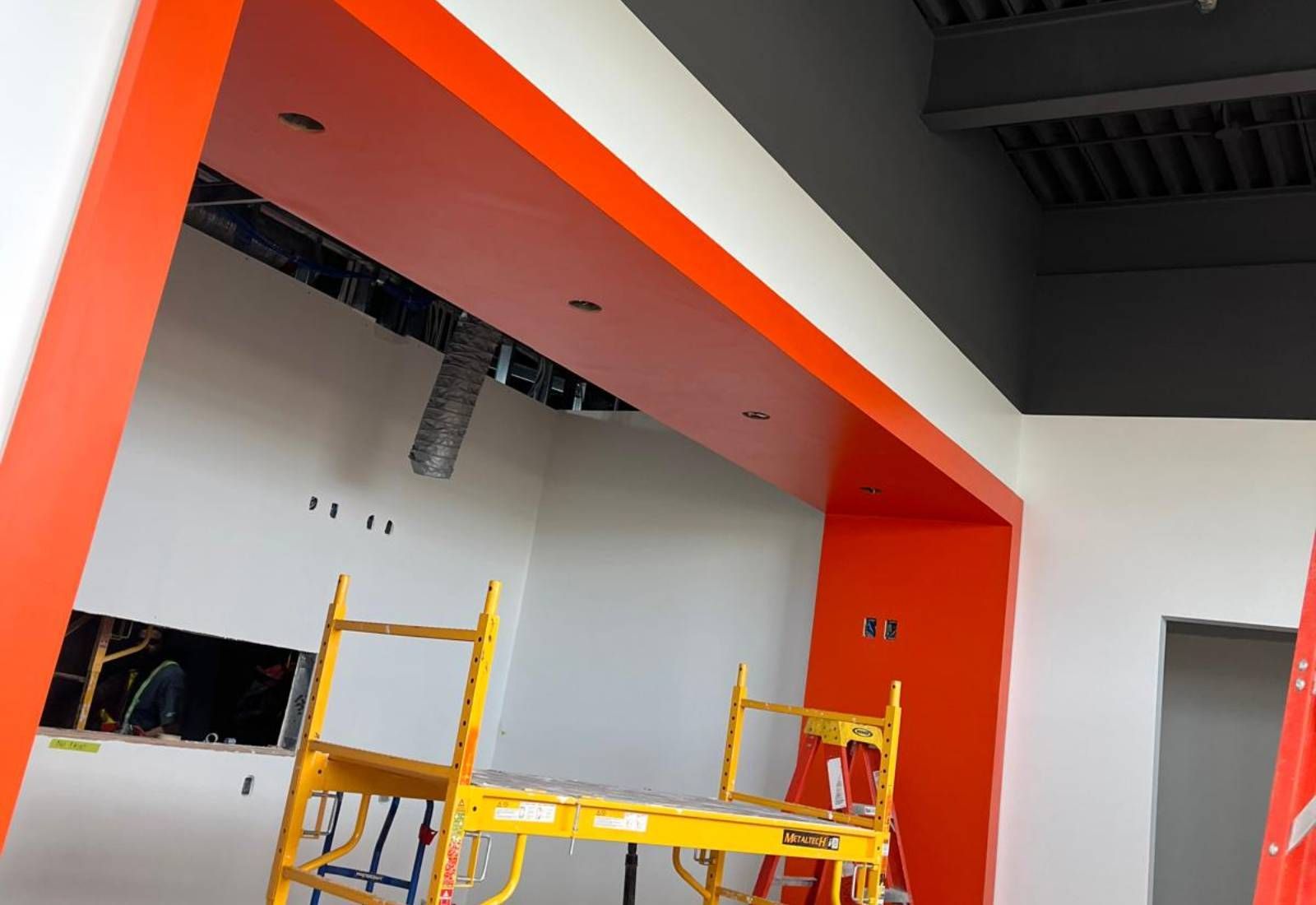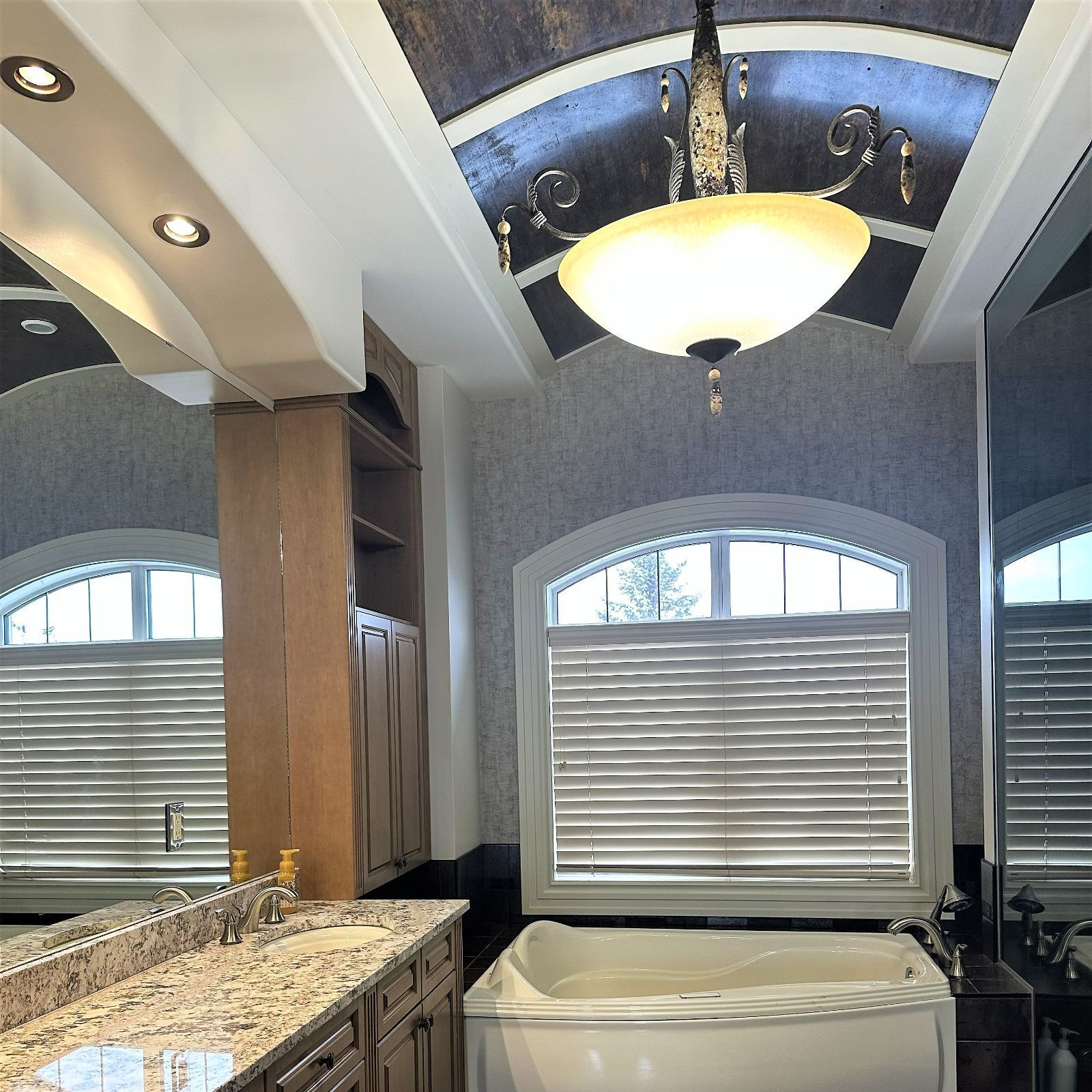Why Smart Business Owners Choose Commercial Repainting
Commercial repainting goes beyond esthetics—it's a vital business investment that affects your bottom line. Your full-time employees spend at least ⅓ of their weekdays at work. Your commercial property's appearance shapes their morale and productivity every day. Our experience as a leading commercial painting company in Saskatoon shows how a well-kept exterior tells your business's story before customers step inside.
Your business might need repainting right now. The answer is likely a soaring win if your last paint job was years ago. Most business owners should repaint their commercial properties every 7-10 years. Saskatoon's unique climate might call for more frequent updates. A fresh coat of paint does more than look good—it protects your building. Quality paint creates a shield against weather damage. This matters even more in our region where exterior paint lasts five to ten years before needing renewal. A fresh, clean paint job boosts your building's curb appeal by a lot. This makes your property more attractive to buyers, tenants, and clients. Buildings with proper maintenance fetch higher market values compared to neglected ones.
This piece explores why Saskatoon business owners should prioritize commercial repainting in 2025. We'll look at how it improves visual appeal, protects your investment, increases property value, and creates lasting first impressions.
The Visual and Financial Impact of a Fresh Paint Job
Your Saskatoon business property's exterior tells your story to potential customers. Research shows you have just 27 seconds to leave a lasting impression on potential clients. Your commercial building's appearance works as a silent but powerful marketing tool. That first look shapes how prospects see your professionalism, attention to detail, and overall business quality.
Why first impressions matter for Saskatoon businesses
Bad first impressions rarely get second chances. Saskatoon's competitive business world shows that neglected exteriors turn away potential customers before they step inside. Research shows 95% of consumers say a business's external appearance affects their shopping decisions. A run-down exterior doesn't just fail to attract customers—it pushes them away. Studies reveal two-thirds of consumers avoided stores just because of how they looked from the street. Saskatoon businesses lose much potential revenue simply because of neglected commercial painting.
How curb appeal influences customer behavior
Curb appeal affects business directly. Studies show 70% of first-time sales come from curb appeal alone. So, commercial repainting does more than improve looks—it changes how customers buy. Your building's exterior builds trust and shows quality. Customers willingly pay more for products in well-kept spaces, which boosts sales and profits. Commercial painting companies in Saskatoon know this connection and help businesses match their exterior appearance with their customer's expectations.
The link between appearance and property value
Fresh paint jobs boost your property's market value. Updated paintwork helps properties earn higher rents and selling prices compared to neglected buildings. Regular commercial repainting shows dedication to property maintenance and positively affects appraisals and valuations. Curb appeal works through three proven dimensions that boost sales—architecture, atmosphere, and authenticity. Professional commercial painting gives Saskatoon business owners immediate visual benefits and long-term financial returns.
Repainting as a Strategic Business Move
A fresh coat of paint does more than beautify your business - it's a smart strategy that helps your bottom line. Smart business owners across Saskatoon know that strategic commercial repainting gives them an edge worth exploring in 2025.
Aligning your building with brand identity
Your brand's colors tell customers what your company stands for. Research shows that the right colors can boost brand recognition by up to 80%. People make quick decisions based on color - 85% say it's the main reason they pick one brand over another. Saskatoon businesses can use commercial painting as part of their marketing plan to bring their brand to life in the real world.
Your commercial property's colors should match your logo, website, and marketing materials to create one unified brand experience. Professional commercial painting companies in Saskatoon help businesses pick colors that capture their brand's unique qualities and leave lasting impressions. This kind of consistency builds trust and shows professionalism at every customer touchpoint.
Staying competitive in a growing Saskatoon market
The business scene in Saskatoon keeps evolving, and looks matter. A professional paint job tells customers you care about quality and details - exactly what they look for before buying. Buildings that look good don't sit empty long and often rent for more than run-down properties.
Commercial repainting offers an affordable way to give your business a fresh look without major construction. Your newly painted building will catch the eye of potential customers walking by, while competitors' worn-down exteriors fade into the background. This visual edge makes a real difference in Saskatoon's competitive market.
Using color psychology to attract the right audience
Colors shape how people feel and act. The right colors can boost sales by 15%, and smart color schemes keep customers browsing 30% longer. These effects matter when you plan your painting schedule.
Each color triggers specific responses: blue builds trust - perfect for banks, green suggests health and growth, red sparks energy and hunger - great for restaurants, while neutral shades create sophisticated backgrounds that make products pop. Local commercial painters in Saskatoon can help pick colors that match your business goals and your target market's priorities. People judge your property in just 90 seconds, and 62% to 90% of that judgment comes down to color. That makes your paint choices a vital business investment, not just decoration.
Protecting Your Property and Reducing Long-Term Costs
Paint does more than just make your commercial property look good. Saskatoon's changing climate demands quality paint to defend your building against environmental threats. A high-quality commercial paint job creates a strong shield that protects your investment for years.
How paint acts as a barrier against weather and moisture
Saskatoon's weather can be tough on exterior surfaces. Professional commercial painting creates a protective barrier that guards your building from rain, snow, and UV radiation. This special coating stops water from getting into surfaces. Quality paint adapts to seasonal temperature changes by expanding and contracting while keeping its protective qualities intact.
Preventing mold, rust, and structural damage
Buildings without proper protection face serious problems like mold, wood rot, and corrosion. Commercial paint with mold-fighting additives stops fungal growth that damages materials and creates health risks. Your building's metal parts need paint as a rust barrier, which becomes crucial during Saskatoon's humid season.
Why repainting is cheaper than major repairs
Putting off the work to be done ended up costing more. Failed protective coatings leave materials vulnerable to damage that needs extensive repairs. Regular upkeep through commercial repainting fixes small issues before they turn into major structural problems. Revive Painting & Wallpaper helps you protect your business from repairs that can get pricey later. Smart commercial painting works as preventative maintenance that makes your property last longer and hold its value.
Knowing When and How Often to Repaint
Your commercial property needs timely maintenance to avoid repairs that can get pricey later. Business owners often find it challenging to schedule commercial repainting services at the right time that maximizes benefits and reduces disruption.
Common signs your business needs repainting
Your building's exterior creates first impressions of your business. Faded colors make your Saskatoon business look worn out and show that the protective coating is wearing away. Paint that bubbles, cracks, or peels from surfaces usually indicates moisture has broken through the protective barrier. Watch out for stubborn stains, water marks, or chalking - that powdery substance on surfaces. Visible mold or mildew growth just needs quick attention because it points to moisture problems that could harm your building's structure. Dirt that won't come off even with pressure washing signals your property needs professional help.
How often should I repaint my business in Saskatoon?
Commercial properties typically need repainting every five to seven years. Notwithstanding that, Saskatoon's changing climate might alter this schedule. Building materials have different needs - wood siding needs fresh paint every 3-7 years, while stucco and concrete surfaces can last 5-10 years between paint jobs. Areas with heavy traffic need more frequent updates than spaces used less often. Yes, it is important to repaint offices and workspaces every 3-5 years, while storage rooms can go 5-7 years. Revive Painting & Wallpaper helps protect your business from expensive repairs caused by delayed maintenance.
Choosing the right commercial painting companies
Finding qualified commercial painting companies in Saskatoon requires careful research. Look for contractors who have experience with commercial projects and know how to work around your schedule to minimize business disruption. Make sure they have proper insurance - both general liability and workers' compensation to protect your investment. Ask for detailed estimates that show costs, materials, and timelines before you commit. Check their reputation through online reviews and get references from similar Saskatoon businesses they've worked with.
Repaint Before it's Too Late!
Delaying commercial repainting can get pricey for Saskatoon business owners. Property managers often put off this crucial maintenance. Small issues turn into major structural headaches. Paint deterioration shows up as cracks, peels, or bubbles. These aren't just looks - they're red flags that your building's protective shield is failing. Your walls might already have moisture seeping in. This can cause wood rot, corrosion, and dangerous mold growth inside your building's structure.
Money problems go beyond physical damage. Smart preventive maintenance through timely commercial painting costs less than fixing extensive damage later. Saskatoon businesses face bigger risks during winter months as weather damage happens faster. Local authorities might even fine you if your building's exterior doesn't meet maintenance codes.
Your team's health deserves attention too. Old, failing paint releases substances that put employees and customers at risk. This is a big deal as it means that older Saskatoon buildings might hide dangerous materials in their old paint layers. A regular commercial painting plan saves money and protects your property's value. Revive Painting & Wallpaper helps maintain your business and shields it from the expensive cycle of neglect and emergency fixes that follows delayed maintenance.
FAQs
Q1. How often should a commercial building be repainted? Commercial buildings typically need repainting every 5-7 years. However, high-traffic interior areas may require attention every 3-5 years, while exterior painting frequency can vary based on climate conditions and building materials.
Q2. What are the benefits of commercial repainting? Commercial repainting offers numerous benefits, including improved curb appeal, protection against weather damage, increased property value, and enhanced brand identity. It also helps prevent costly structural repairs and creates a positive first impression for customers.
Q3. How does commercial repainting impact business success? A fresh paint job can significantly influence customer behavior and business success. It can increase brand recognition, attract more customers, and even lead to higher sales. Well-maintained exteriors have been shown to spend less time on the market and often command premium rates.
Q4. What signs indicate that a business needs repainting? Common signs include fading colors, peeling or cracking paint, visible stains or water marks, and the presence of mold or mildew. If pressure washing can't remove stubborn dirt, it may be time for a repaint.
Q5. Is commercial painting a profitable business venture? Commercial painting can be a profitable business. Well-managed painting companies often enjoy gross profits of around 50%, with net profits typically ranging from 13% to 27%. The demand for skilled commercial painters spans various industries, ensuring a steady stream of projects.



